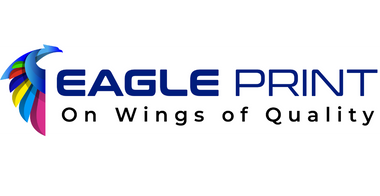Cómo elegir la mejor película de transferencia DTF para sus proyectos

🎯 Cómo elegir la mejor película de transferencia DTF para tus proyectos
Consiga impresiones vibrantes, precisas y duraderas
Cómo elegir la mejor película de transferencia DTF para sus proyectos ha revolucionado la industria de la confección personalizada, ofreciendo impresiones vibrantes, duraderas y de alta resolución en una amplia gama de tejidos, como algodón, poliéster y mezclas. Su capacidad para ofrecer colores vibrantes y detalles finos la ha convertido en la opción predilecta tanto para pequeñas empresas como para producciones a gran escala.
Sin embargo, lograr una calidad de color óptima no se trata solo de contar con el equipo adecuado. También requiere una combinación de materiales adecuados, ajustes cuidadosamente calibrados y un mantenimiento constante. Sin seguir las mejores prácticas, incluso las mejores impresoras pueden producir resultados apagados o imprecisos. Tanto si eres principiante como si eres un profesional de la impresión experimentado, comprender los detalles más sutiles puede mejorar significativamente tu resultado final y la satisfacción del cliente.
En esta guía, lo guiaremos a través de los pasos y técnicas esenciales que pueden ayudarlo a lograr resultados consistentes y vibrantes con cada impresión.
🧠 Entendiendo la película de transferencia DTF
La película de transferencia DTF es una película de PET (tereftalato de polietileno) especializada, diseñada para procesos de impresión DTF. Actúa como soporte de la tinta y el polvo adhesivo, lo que permite transferir diseños a diversos tejidos. La calidad de la película de transferencia influye directamente en la intensidad, la durabilidad y la sensación de la impresión final.
🛠️ Factores clave a considerar
1️⃣ Capacidad de absorción de tinta
Una película DTF de alta calidad debe tener una excelente absorción de tinta para garantizar una reproducción de color vibrante y precisa. Una absorción de tinta deficiente puede provocar decoloración y reducir la claridad de la impresión.
2️⃣ Calidad del recubrimiento
El recubrimiento de la película afecta su capacidad para retener la tinta y liberarla sobre la tela. Busque películas con recubrimientos uniformes y lisos para lograr resultados consistentes.
3️⃣ Tipo de peeling: Caliente vs. Frío
-
Hot Peel : Permite la extracción inmediata después del prensado, acelerando el proceso de producción.
-
Pelado en frío : requiere enfriamiento antes de pelar, lo que puede mejorar la durabilidad de la impresión.
Elija el tipo de peeling que mejor se adapte a su flujo de trabajo y al acabado deseado.
4️⃣ Espesor de la película
Las películas más gruesas pueden ofrecer mayor durabilidad, pero pueden afectar la suavidad de la impresión. Las películas más delgadas proporcionan una sensación más suave, pero pueden ser menos duraderas. El equilibrio es clave según el uso final del producto.
5️⃣ Compatibilidad con tejidos
Asegúrese de que la película sea compatible con los tipos de telas sobre las que desea imprimir, ya sea algodón, poliéster, mezclas u otros materiales.
🔍Tipos de películas de transferencia DTF
Películas de pelado en frío
Ideales para lograr un acabado mate y se utilizan a menudo para diseños detallados. Requieren enfriamiento antes de despegarse, lo que puede aumentar la durabilidad de la impresión.
Películas de despegue en caliente
Son ideales para tiempos de producción más rápidos, ya que se pueden pelar inmediatamente después del prensado. Suelen tener un acabado brillante.
✨ Películas especiales
Estas incluyen películas con acabados únicos, como brillo, efectos metálicos u holográficos. Pueden aportar un aspecto distintivo a sus diseños, pero pueden requerir técnicas específicas de manipulación y aplicación.
🧪 Pruebas y garantía de calidad
Antes de decidirse por una película DTF en particular, es recomendable realizar impresiones de prueba para evaluar:
-
Vibración del color : asegúrese de que los colores sean brillantes y fieles al diseño.
-
Reproducción de detalles : verifique si los detalles finos se reproducen con precisión.
-
Durabilidad del lavado : prueba la resistencia de la impresión al lavado y al desgaste.
-
Sensación y flexibilidad : evalúa la suavidad y flexibilidad de la impresión en la tela.
Películas de transferencia DTF recomendadas
Si busca películas de transferencia DTF de alta calidad, considere explorar las opciones disponibles en Eagle DTF Print . Ofrecen una gama de películas adecuadas para diversas aplicaciones y tipos de tejidos.
📚 Recursos adicionales
Para profundizar su comprensión de los procesos de impresión digital, puede consultar el artículo de Wikipedia sobre Impresión digital .
📌 Conclusión
Elegir la mejor película de transferencia DTF para sus proyectos es crucial para lograr impresiones de alta calidad, duraderas y vibrantes. Al considerar factores como la absorción de la tinta, la calidad del recubrimiento, el tipo de despegado y la compatibilidad con los tejidos, podrá tomar decisiones informadas que mejoren sus proyectos de impresión.



